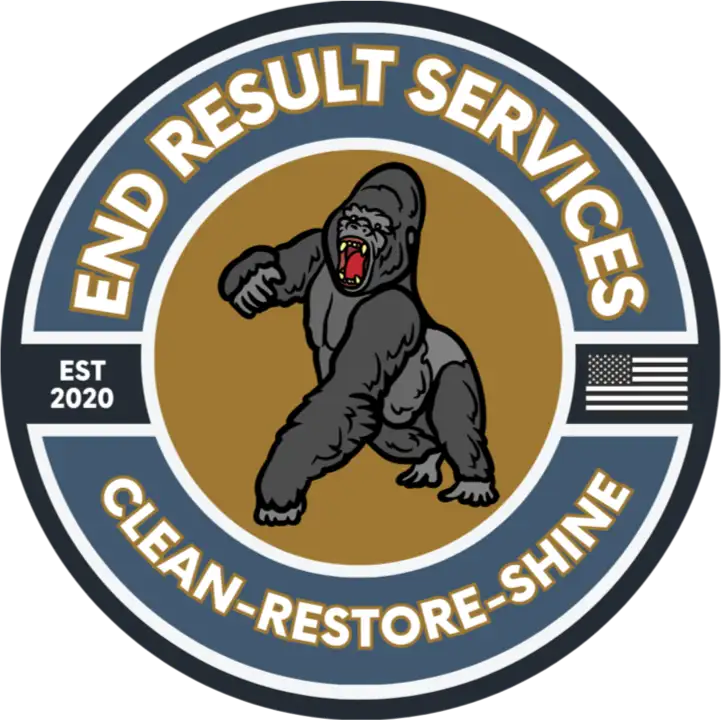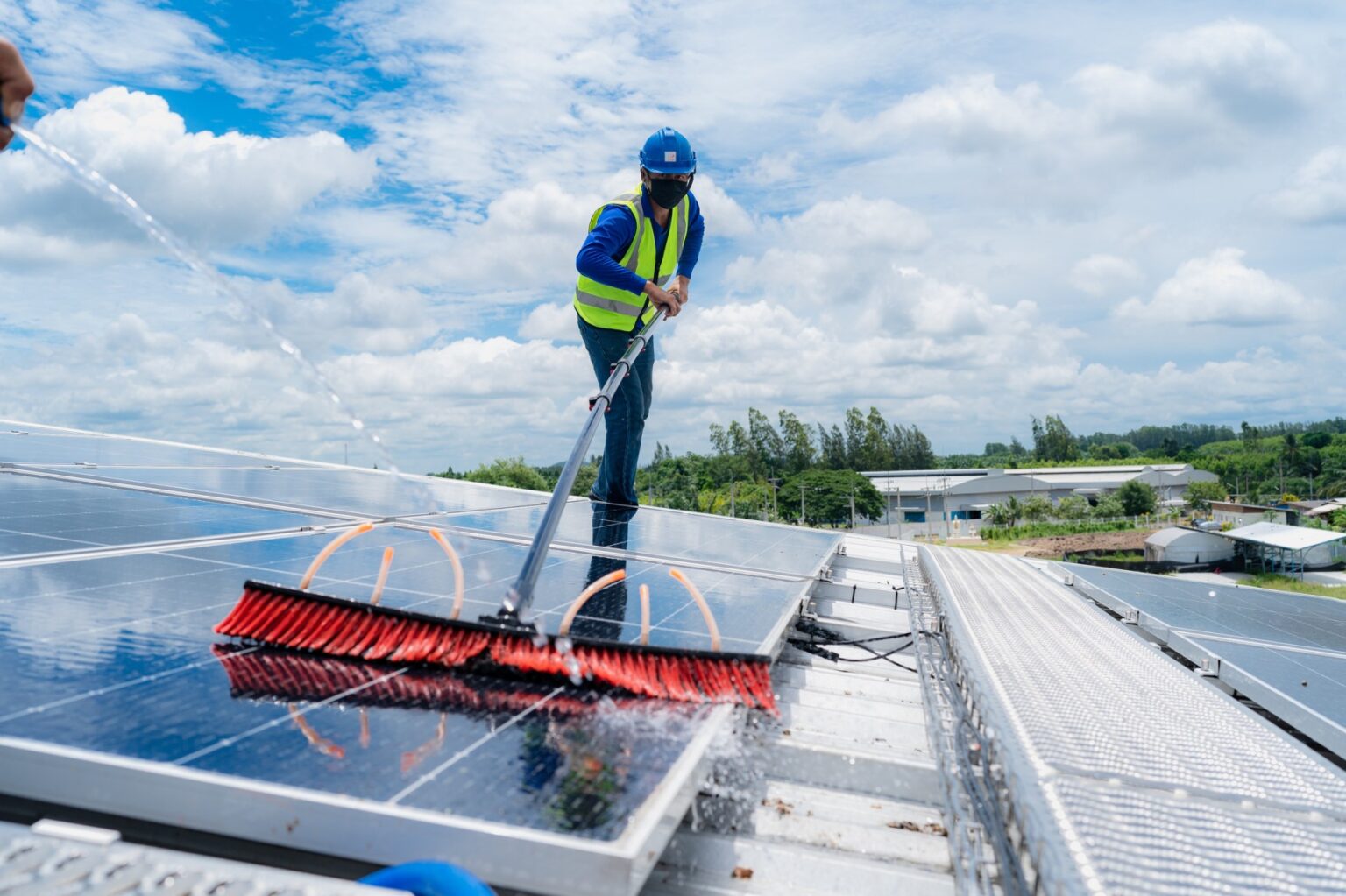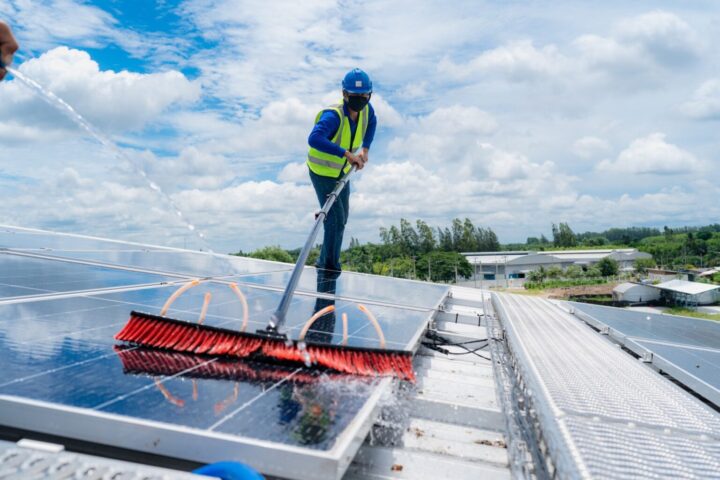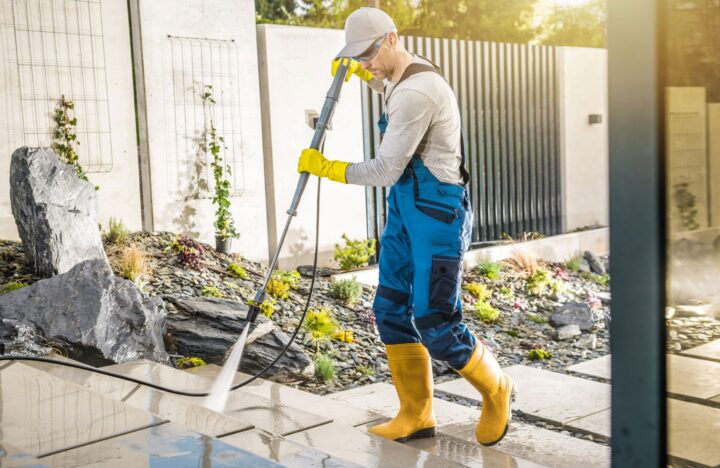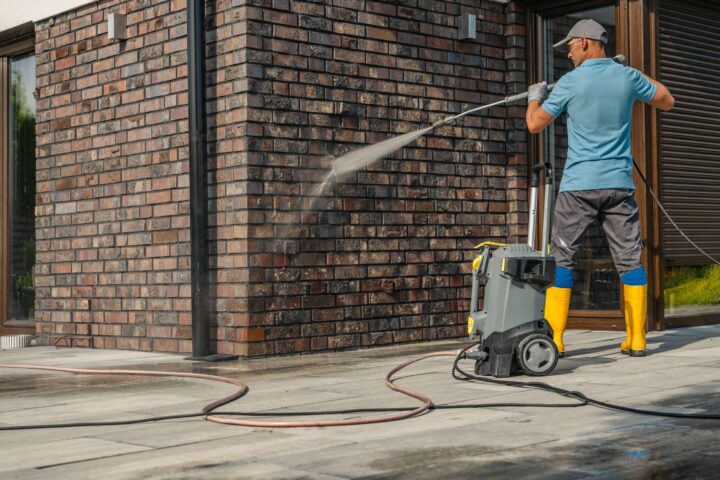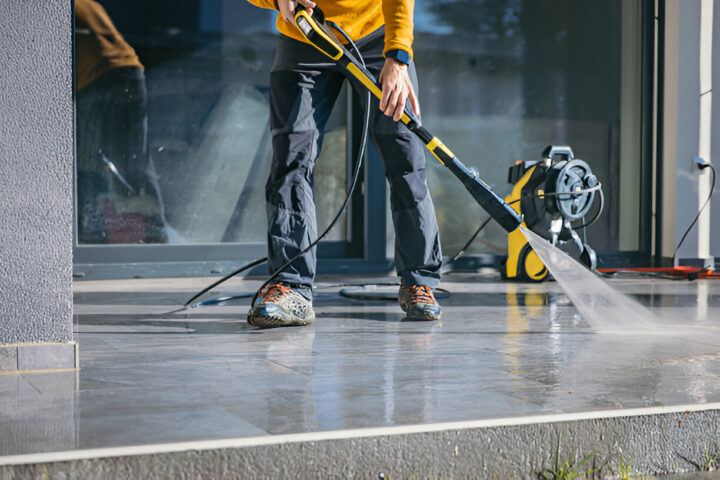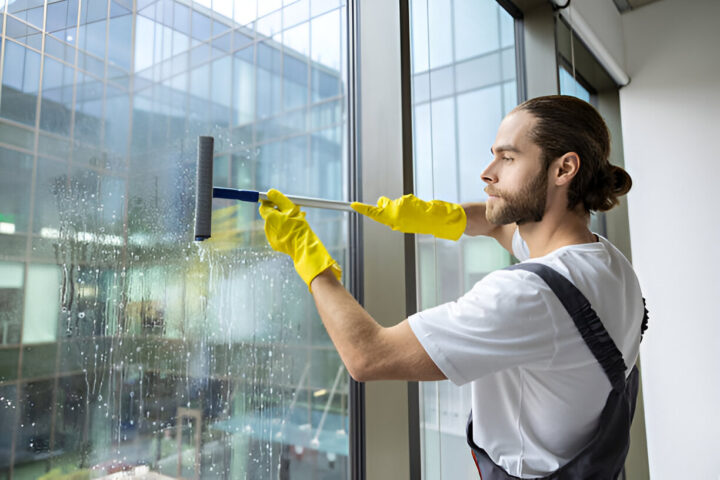Solar panels are a brilliant way to capture clean energy from the sun. But over time, dirt, dust, pollen, bird droppings, and other environmental debris accumulate on their surface. That buildup blocks sunlight, reducing efficiency—sometimes by as much as 25% or more. To get the most out of your solar investment, regular maintenance through professional solar panel cleaning services is essential. This guide dives into the ‘why,’ ‘when,’ and ‘how’ of effective solar panel maintenance, offering clear instructions, best practices, and cost-versus-benefit insights.
Why Clean Solar Panels Matter for Performance
The science behind solar energy absorption
Solar photovoltaic (PV) panels work by converting sunlight into electricity via semiconducting materials. The more direct sunlight they receive, the higher the conversion rate. A dust-free surface ensures maximal light transmission and power production.
- Direct light absorption – Clean glass allows photons to reach the cells without scattering.
- Optimal panel temperature – Elite PV form factors stay cooler with a clean surface, improving efficiency.
- Reduced reflection loss – Dirt creates micro-shadows, lowering the energy harvested.
How dirt, dust, and debris reduce efficiency
Various contaminants can degrade panel output:
- Dust and pollen – Fine particles form a layer that blocks light.
- Bird droppings – Opaque, acidic stains severely reduce local output.
- Tree sap and leaves – Mold trouble during humid weather.
- Industrial smog or salt spray – Especially harmful near busy roads or coastal areas.
Comparing clean vs dirty panel output stats
Studies show:
- Panels lose 5–10% efficiency from light dust buildup.
- After a season without cleaning, 15–25% performance drop is common.
- Bird droppings alone can reduce output by 30% locally on affected cells.
The Top Benefits of Routine Solar Panel Cleaning
Improved energy output and daily performance
- Increased electricity generation, leading to higher utility bill savings.
- More consistent power production, even on days with lower sunlight.
Extended system longevity through reduced wear
- Dirt layer absorbs heat, raising cell temperature and slowing down performance over years.
- Clean panels help the system operate within its designed specs throughout its lifespan.
Enhanced ROI and faster payback period
- Even a small efficiency gain (5–15%) can pay for annual cleaning service.
- For larger systems, the incremental power is worth scheduling regular maintenance.
Increased home resale value and curb appeal
- Clean, bright panels enhance home aesthetics.
- Buyers and appraisers view a well-maintained solar system as an asset.
How Dirt Accumulation Impacts Solar Efficiency
Effects of bird droppings, pollen, and smog
- Bird droppings: thick, acidic stains that severely block sunlight.
- Pollen: sticky and hard to wash off once dry—common in spring.
- Smog and industrial pollutants: create a film that needs stronger cleaning solutions.
Urban vs rural environment exposure
- Urban areas: air pollution, road dust, and soot are major culprits.
- Rural areas: pollen, crop dust, and animal droppings often require attention.
- Coastal zones: salt spray can intensify corrosion and stain buildup.
Common misconceptions about “self-cleaning” panels
- Some believe rain washes panels clean—often false.
- Rain alone seldom removes greasy residues or hardened pollen.
- Without manual or professional cleaning, panels rarely stay fully clear – so, contact expert solar panel cleaners today to ensure your system runs at peak efficiency year-round.

Creating an Effective Maintenance Schedule
Recommended frequency by climate and panel type
| Climate Type | Recommended Cleaning Frequency |
| Dry, dusty zones | Every 2–3 months |
| High pollen season | Monthly during spring |
| Coastal/industrial | Every 1–2 months due to heavy buildup |
| Urban residential | Quarterly to maintain optimal output |
Seasonal changes and how they affect panel cleanliness
- Spring: pollen buildup; wet cleaning helps.
- Summer: dust accumulation peaks; professional clean recommended.
- Fall: leaves and tree debris need removal.
- Winter: snow/ice melt ties reload; clear panels as soon as safe.
DIY vs professional cleaning intervals
- DIY approach: up to monthly checks with soft brushes and water.
- Professional: ideally once or twice annually, depending on region.
- High buildup risk zones: quarterly pro clean may be optimal.
Professional vs DIY Cleaning: What’s More Effective?
Pros and cons of DIY solar panel cleaning
Pros:
- Cost savings — only equipment and water used.
- Convenience — can be done any time of day.
- Immediate attention — spot-cleaning when needed.
Cons:
- Safety risks on rooftops or steep slopes.
- Limited access — may leave streaks or leave debris behind.
- Risk of using improper materials that scratch glass or leave residue.
Equipment and safety gear needed
- Soft, non-abrasive brushes with long handles.
- Deionized or distilled water in spray bottles or low-pressure systems.
- Safety harnesses, ladders, and fall protection gear.
- Soft microfiber or lint-free towels for drying/polishing.
Why pros use soft wash systems and deionized water
- Low-pressure soft wash avoids damaging panel seals or frames.
- Deionized water leaves no minerals or streaks upon drying.
- Cleaning technicians use specialized nozzles and poles to reach high panels safely.
Cost vs Savings: Is Solar Panel Cleaning Worth It?
Annual energy gains from cleaning
- Routine cleaning recovers 5–15% of lost energy.
- That translates to hundreds of dollars for residential systems and thousands for commercial installations.
Estimating cleaning service costs
- Residential prices: $150–$350 per clean (depending on system size and location).
- Commercial systems can run $500–$2000+, depending on panel count and complexity.
- Lower cost if bundling with other services (gutter, window cleaning, etc.).
Long-term value and warranty protection
- Some manufacturer warranties require routine maintenance to stay valid.
- Unclean panels may void performance guarantees if not serviced.
- Preventative cleaning protects micro-inverters or junction boxes from corrosion and grime buildup.

Signs Your Panels Need Immediate Cleaning
Visible debris, bird droppings, or shadow lines
- Spot large bird droppings or stains creating dark shadows.
- Orphaned leaves at panel edges blocking sunlight.
- Dust or lichen visible on the surface.
Sudden drop in energy output
- A fall of 5–10% over a month suggests panel surface grime.
- Use monitoring systems or inverter dashboards to track daily yields.
- If output dips without weather cause, cleaning is likely needed.
Monitoring systems and alerts
- Smart inverters and home dashboards can trigger alerts for abnormal drops.
- Compare output against historical averages for similar weather days.
- Consider cleaning if performance dips consistently.
Safety First: Cleaning Precautions for Solar Panel Owners
Working at heights safely
- Use non-slip shoes, harnesses, and anchoring points.
- Avoid cleaning on wet or icy panels, or in strong winds.
- If unsure, hire professionals – they hold liability insurance and PPE.
Avoiding abrasive materials and chemicals
- Never use stiff brushes, sharp tools, or abrasive sponges.
- Do not use strong chemicals—no detergents, bleach, or acids.
- Stick to soft brushes and deionized water for safe cleaning.
Panel manufacturer cleaning guidelines
- Most recommend lukewarm deionized/distilled water only.
- Avoid high-pressure washers, which can penetrate seals.
- Follow specified cleaning intervals needed for warranty compliance.
Summary & Best Practices
Set a quarterly or bi-annual cleaning reminder
- Schedule calendar alerts when next cleaning is due.
- After heavy weather or high pollen days, add an extra cleaning.
Use monitoring tools to detect inefficiency
- Track panel output daily via inverter or smart monitoring apps.
- Performance dip triggers can help schedule faster cleaning.
Partner with licensed solar maintenance providers
- Certified providers use tested methods and safe equipment.
- Licensed professionals offer warrantied cleaning and documentation.
- Combining solar cleaning with other home services can mean bundled discounts.
Frequently Asked Questions (FAQs)
Conclusion
Clean solar panels aren’t just about aesthetics—they’re about maximizing your energy savings, protecting your investment, and ensuring your system works reliably over its lifespan. By understanding the science, implementing regular cleaning schedules, and engaging professionals when needed, you can secure both short‑term gains and long‑term peace of mind.
When you have solar panels covered in dust, bird droppings, and grime, they’re not just dirty—they’re underperforming. Choose End Results Services, as they specialize in solar panel cleaning that helps you get the most out of your solar energy system without lifting a finger.
